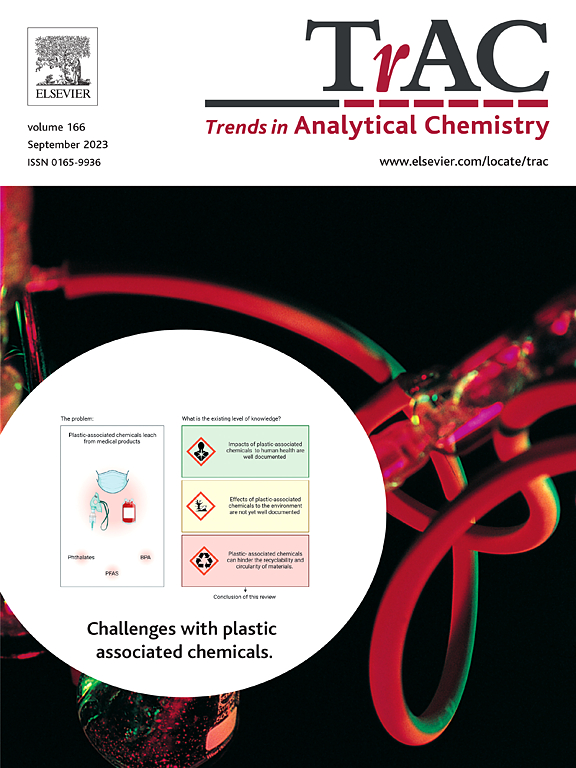Determination and assessment of contamination of toxic chemical elements in soils – Review
IF 12
1区 化学
Q1 CHEMISTRY, ANALYTICAL
引用次数: 0
Abstract
This work reviews the main topics in determining and evaluating the contamination of the toxic chemical elements antimony, arsenic, cadmium, lead, and mercury in soils. Initially, the sampling and storage steps are discussed. Next, the advantages and limitations of drying methods using oven heating, freeze-drying, air drying, and infrared radiation are presented. Subsequently, the importance of particle size in soil analysis is addressed. In addition, sample preparation procedures involving microwave-assisted radiation and the acids and their mixtures used for digestion of soil matrices are commented. Subsequently, the spectrometric analytical methods used to quantify chemical elements, such as inductively coupled plasma optical emission spectrometry (ICP OES), inductively coupled plasma mass spectrometry (ICP-MS), atomic fluorescence spectrometry (AFS), atomic absorption spectrometry with electrothermal atomization (ET AAS) and the direct mercury analyzer (DMA) are compared. Finally, the single and integrated indices used to evaluate the contamination of soils with toxic chemical elements in are briefly reported.
土壤中有毒化学元素污染的测定与评估 - 综述
本作品回顾了确定和评估土壤中有毒化学元素锑、砷、镉、铅和汞污染的主要课题。首先讨论了取样和储存步骤。接着,介绍了使用烘箱加热、冷冻干燥、空气干燥和红外辐射等干燥方法的优点和局限性。随后,讨论了粒度在土壤分析中的重要性。此外,还对涉及微波辅助辐射的样品制备程序和用于消化土壤基质的酸及其混合物进行了评论。随后,比较了用于量化化学元素的光谱分析方法,如电感耦合等离子体光发射光谱法(ICP OES)、电感耦合等离子体质谱法(ICP-MS)、原子荧光光谱法(AFS)、电热原子化原子吸收光谱法(ET AAS)和直接汞分析仪(DMA)。最后,简要报告了用于评估土壤中有毒化学元素污染的单一指数和综合指数。
本文章由计算机程序翻译,如有差异,请以英文原文为准。
求助全文
约1分钟内获得全文
求助全文
来源期刊

Trends in Analytical Chemistry
化学-分析化学
CiteScore
20.00
自引率
4.60%
发文量
257
审稿时长
3.4 months
期刊介绍:
TrAC publishes succinct and critical overviews of recent advancements in analytical chemistry, designed to assist analytical chemists and other users of analytical techniques. These reviews offer excellent, up-to-date, and timely coverage of various topics within analytical chemistry. Encompassing areas such as analytical instrumentation, biomedical analysis, biomolecular analysis, biosensors, chemical analysis, chemometrics, clinical chemistry, drug discovery, environmental analysis and monitoring, food analysis, forensic science, laboratory automation, materials science, metabolomics, pesticide-residue analysis, pharmaceutical analysis, proteomics, surface science, and water analysis and monitoring, these critical reviews provide comprehensive insights for practitioners in the field.
 求助内容:
求助内容: 应助结果提醒方式:
应助结果提醒方式:


